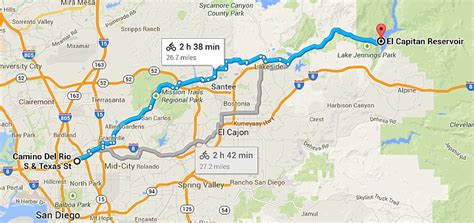Located in the heart of San Diego County, California, El Capitan Reservoir is a vital component of the region’s water supply system. As one of the largest reservoirs in the county, it plays a crucial role in meeting the water demands of the growing population. The reservoir is situated in a scenic area, surrounded by rolling hills and picturesque landscapes, making it a popular spot for outdoor recreation and tourism.
History and Construction El Capitan Reservoir was constructed in 1934-1935 by the city of San Diego, with the primary purpose of providing a reliable source of water for the city’s residents. The reservoir was built on the San Diego River, which flows from the Cuyamaca Mountains to the Pacific Ocean. The construction of the reservoir involved the building of a dam, which impounds the water and creates a large storage capacity. Over the years, the reservoir has undergone several upgrades and expansions to increase its capacity and improve its operational efficiency.
Water Supply and Management El Capitan Reservoir is an essential part of the San Diego County Water Authority’s (SDCWA) water supply system. The reservoir stores water from various sources, including the San Diego River, rainfall, and imported water from other regions. The water is treated and distributed to households, businesses, and institutions throughout the county. The SDCWA manages the reservoir’s water levels, ensuring that there is a sufficient supply to meet the demands of the community while also maintaining environmental and recreational uses.
Recreation and Tourism El Capitan Reservoir offers a range of recreational activities, including boating, fishing, and hiking. The reservoir is home to a variety of fish species, such as largemouth bass, smallmouth bass, and bluegill, making it a popular spot for anglers. The surrounding hills and trails provide opportunities for hiking, biking, and horseback riding, offering stunning views of the reservoir and the surrounding landscape. The reservoir is also a popular spot for picnicking, bird-watching, and photography.
Environmental Significance El Capitan Reservoir plays a crucial role in maintaining the environmental balance of the region. The reservoir helps to regulate the water flow in the San Diego River, preventing flooding and ensuring a consistent supply of water for agricultural and urban uses. The reservoir also supports a diverse range of plant and animal species, including several endangered and threatened species. The surrounding hills and forests provide habitat for a variety of wildlife, including deer, coyotes, and mountain lions.
Challenges and Opportunities Despite its importance, El Capitan Reservoir faces several challenges, including drought, climate change, and water quality issues. The reservoir’s water levels have been affected by droughts in recent years, highlighting the need for sustainable water management practices. The SDCWA is working to address these challenges through the implementation of water conservation measures, water recycling programs, and the development of new water sources.
In conclusion, El Capitan Reservoir is a vital component of San Diego County’s water supply system, providing a reliable source of water for the region’s growing population. The reservoir’s recreational and environmental significance make it a popular spot for outdoor enthusiasts and a crucial habitat for a diverse range of plant and animal species. As the region continues to grow and develop, it is essential to address the challenges facing the reservoir and work towards sustainable water management practices that ensure the long-term viability of this valuable resource.
What is the primary purpose of El Capitan Reservoir?
+The primary purpose of El Capitan Reservoir is to provide a reliable source of water for the city of San Diego and the surrounding communities.
What recreational activities are available at El Capitan Reservoir?
+El Capitan Reservoir offers a range of recreational activities, including boating, fishing, hiking, biking, and horseback riding.
What are some of the environmental benefits of El Capitan Reservoir?
+El Capitan Reservoir helps to regulate the water flow in the San Diego River, preventing flooding and ensuring a consistent supply of water for agricultural and urban uses. The reservoir also supports a diverse range of plant and animal species.
Key Takeaways
- El Capitan Reservoir is a vital component of San Diego County’s water supply system.
- The reservoir provides a reliable source of water for the region’s growing population.
- El Capitan Reservoir offers a range of recreational activities, including boating, fishing, and hiking.
- The reservoir plays a crucial role in maintaining the environmental balance of the region.
- The SDCWA is working to address the challenges facing the reservoir, including drought, climate change, and water quality issues.
Technical Breakdown
The construction of El Capitan Reservoir involved the building of a dam, which impounds the water and creates a large storage capacity. The dam is approximately 200 feet tall and 1,200 feet long, with a storage capacity of over 112,000 acre-feet of water. The reservoir’s water levels are managed by the SDCWA, which ensures that there is a sufficient supply to meet the demands of the community while also maintaining environmental and recreational uses.
Future Trends Projection
As the region continues to grow and develop, it is essential to address the challenges facing El Capitan Reservoir and work towards sustainable water management practices. The SDCWA is exploring new water sources, including recycled water and desalination, to supplement the region’s water supply. Additionally, the agency is implementing water conservation measures and promoting water-efficient practices to reduce the demand on the reservoir.
Decision Framework
When considering the management of El Capitan Reservoir, it is essential to weigh the competing demands of water supply, environmental protection, and recreational uses. The SDCWA must balance the need to provide a reliable source of water for the community with the need to protect the environmental and recreational values of the reservoir. This requires a comprehensive decision-making framework that takes into account the complex relationships between these competing demands.
Step-by-Step Guide
To visit El Capitan Reservoir, follow these steps:
- Take Highway 67 to the El Capitan Reservoir exit.
- Turn left onto El Capitan Reservoir Road and follow the signs to the reservoir.
- Park in the designated parking areas and follow the trail to the reservoir.
- Enjoy the recreational activities available, including boating, fishing, and hiking.
- Be sure to follow all rules and regulations, including those related to water safety and environmental protection.
Pro-Con Analysis
The management of El Capitan Reservoir involves a range of trade-offs between competing demands. On the one hand, the reservoir provides a reliable source of water for the community, which is essential for economic and population growth. On the other hand, the reservoir’s environmental and recreational values must be protected, which requires careful management and regulation. The following table summarizes the pros and cons of different management strategies:
| Management Strategy | Pros | Cons |
|---|---|---|
| Water supply prioritization | Reliable source of water for the community | Potential environmental and recreational impacts |
| Environmental protection | Protection of environmental and recreational values | Potential impacts on water supply and economic growth |
| Recreational prioritization | Promotion of recreational activities and tourism | Potential impacts on water supply and environmental protection |

By weighing the pros and cons of different management strategies, the SDCWA can make informed decisions that balance the competing demands on El Capitan Reservoir.



